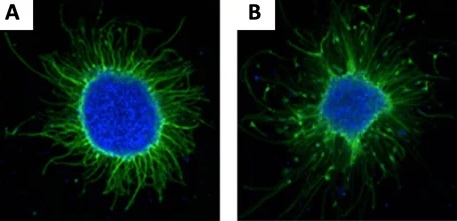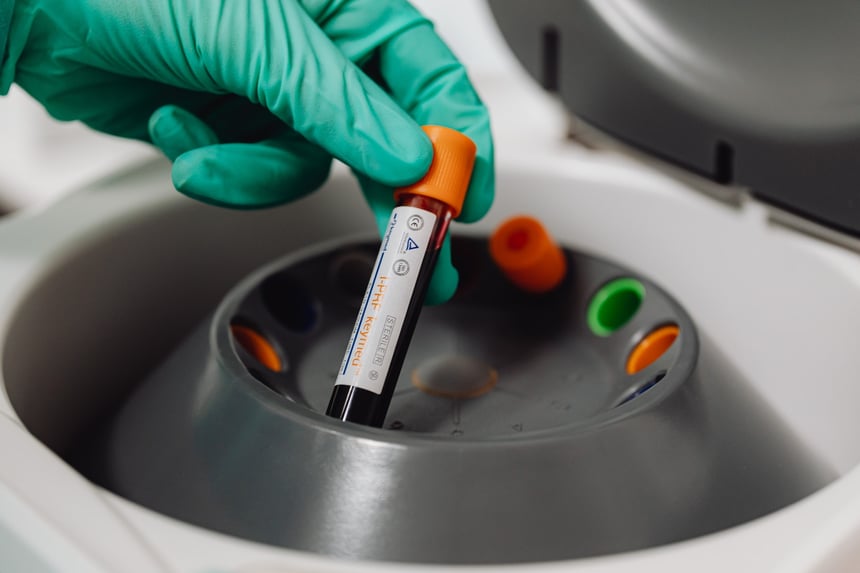- Preclinical & Drug Discovery CRO Bioengineered 3D Tissue Models
Humanize your research with Alvetex® bioengineered 3D tissue services
Human tissue testing stands as an indispensable element in the realm of drug discovery and development, serving as a cornerstone for evaluating the safety and efficacy of pharmaceuticals destined for human consumption. Human data holds paramount importance in forecasting clinical success, as positive outcomes within human test systems can substantially enhance the commercial potential of drug candidates.
Genuine 3D cell culture, simply and routinely
Cells grown in Alvetex® maintain their in vivo morphology, behaviour and responsiveness within an in vitro model system.
To better translate preclinical data to the clinic, researchers turn to our contract testing services in human fresh tissues or our bioengineered 3D human tissue models.
REPROCELL's 3D bioengineered human tissues, produced using Alvetex®, complement our fresh tissue assays by accurately recapitulating human biology in longer duration experiments, allowing investigations into mechanisms that are key to many drug targets including fibrosis, wound healing and epithelial barrier disruption.
Our human tissue models are also useful for testing other substances including chemicals, consumer products, cosmetics and pollutants.
Human tissue represents the most accurate simulation of drug behavior in patients

Full-thickness human skin bioengineered on Alvetex Scaffold.
Cultivating human tissue within Alvetex facilitates the creation of authentic 3D cell tissue architecture, providing an accurate portrayal of drug effects, as well as the effects of other test substances like chemicals or cosmetics, within human tissue.
Alvetex scaffolds support cells to build a wide range of complex 3D tissues, with structures and functions to match that of the human body. Our contract research services, conducted at our laboratories in the UK, utilize Alvetex to provide valuable insights into crucial markers for human disease, the effects of drugs over extended exposure periods, and comparisons between healthy and diseased tissue models using your test substance.
Speak to our scientists today — discover how our fee-for-service model can save you time and money by:
- generating valuable human tissue data
- growing the value of your IP
- and increasing the likelihood of your commercial success.
Example: Comparing responses in healthy and diseased tissues


⍺SMA and FAP are markers of fibroblast activation. Upregulation of these proteins is associated with enhanced ECM deposition in the diseased state of idiopathic pulmonary fibrosis (IPF).
Achieve more meaningful results with 3D human tissue models

Traditional 2D cell culture puts stresses on cells, resulting in a flattened cell morphology that impairs many cellular functions. This modification of normal cell behaviour often generates inaccurate and misleading data.

Alvetex 3D cell culture eliminates these stresses and artificial responses. Cells are able to maintain their normal shape and internal structure and they can form complex interactions with adjacent cells as they would in vivo, enabling the creation of complex 3D human tissues.


Electron microscope images showing how a cell deforms to adapt to a 2D tissue culture environment, versus how a cell appears in Alvetex 3D cell culture.

Alvetex bioengineered tissue models are self-assembled by growing multiple cell types together, re-creating native tissue architecture. The formation of a biologically-accurate structure occurs as the cells coordinate with each other via their innate signalling mechanisms.
These in vitro experimental systems enable us to obtain useful information about in vivo biological processes.
Our assay services using Alvetex 3D bioengineered tissue models
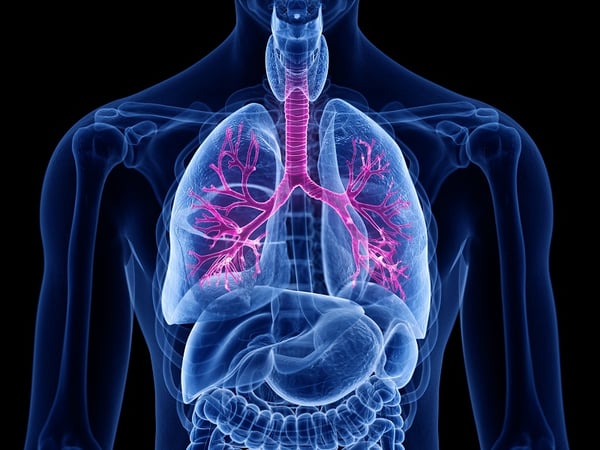
IPF model
Our idiopathic pulmonary fibrosis (IPF) model is the most effective model available for investigation of drugs to treat pulmonary fibrosis. The model uses human primary lung fibroblasts from patients with IPF and an alveolar type II cell line to create a 3D model of the lung. This is the most sophisticated in vitro tissue modelling fibrotic lung.
Our IPF model and healthy lung models offer the ability to investigate drug efficacy of novel treatments for fibrosis. IL-6/8/1β are elevated in the models, reflecting human IPF disease pathophysiology, and the models can be stimulated by the inclusion of TGF-beta or bleomycin. Cytokines such as IL-6/8/1β are thought to be secreted by alveolar epithelial cells following repeated micrograde injuries, which subsequently act upon the underlying fibroblast compartment. The IPF model shows elevated gene expression for IL-6/8/1β, relative to the healthy lung models, and increased ECM deposition, turnover and fibroblast activation, allowing the testing of anti-fibrotic compounds over many days in culture.

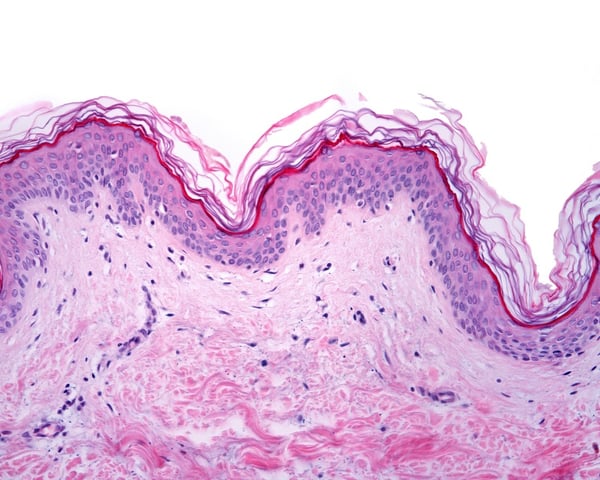
Skin Model: REPROSKIN™
Our cutting-edge full-thickness engineered skin model, constructed from human primary cells, represents the forefront of the market for drug discovery assays. This model consists of a dermal layer supporting a stratified keratinized epithelial layer, providing a highly accurate representation of human skin. Our comprehensive skin model offers a variety of investigative services tailored to meet the diverse needs of drug discovery research.
We have created the market leading full thickness skin model, comprised of a multi-layer tissue, including a fully developed stratum corneum within the epidermis and a dermal layer. Our model is suitable for a wide range of studies on aspects such as skin barrier, ageing skin, pigmented skin and neurosensory skin, with variations of the model including additional cell types such as melanocytes or Langerhans cells.
To create REPROSKIN, fibroblasts secrete endogenous extracellular matrix within the Alvetex® scaffold, which is organised in a transverse and longitudinal manner, similar to in vivo skin. A stratified keratinised layer is grown on top, generating a basement membrane between the epidermis and dermis.

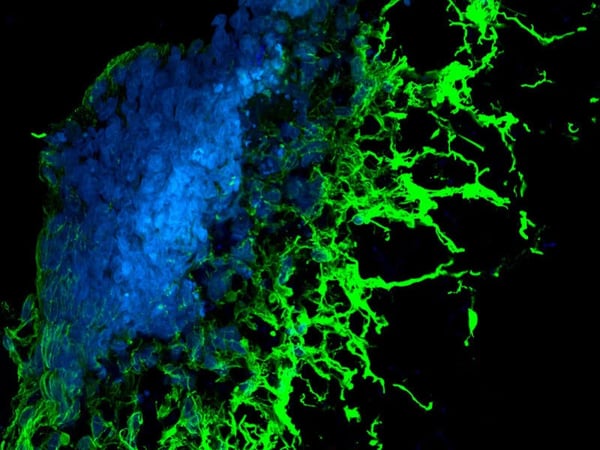
Neurite Model
Measuring neurite outgrowth allows for the evaluation of the impact of test drugs on neurite formation or toxicity. Our translational neurite model integrates Alvetex scaffolds with iPSC-derived human neurons, resulting in the formation of a mature neuronal network complete with synaptic connections. This innovative model provides a comprehensive platform for assessing drug effects on neuronal function and viability.
REPROCELL has developed an Alvetex 3D assay for the inhibition and recovery of neurite outgrowth. REPROCELL's Neuro cells, which are available as healthy wild-type (image A) and Alzheimer's disease patient-derived (image B), are incorporated into the model, to model pathological changes in vitro. This gives insight to neurodegenerative diseases that derive from neurite inhibition and enables testing of compounds that might influence neurite outgrowth.
